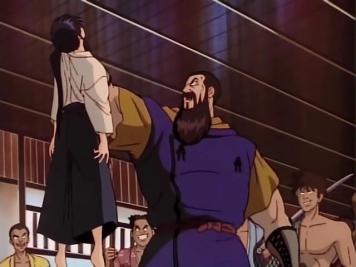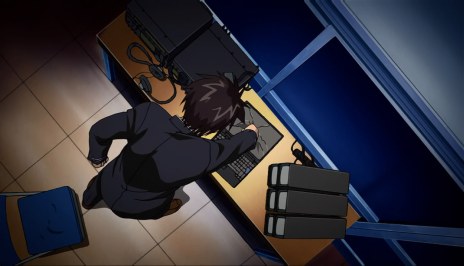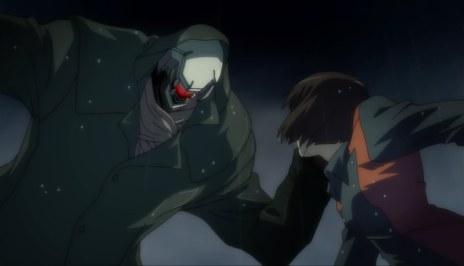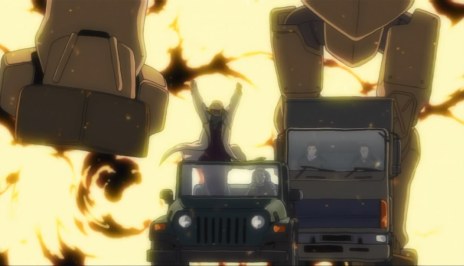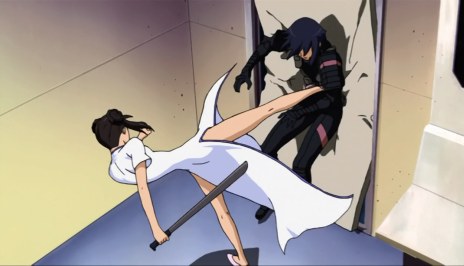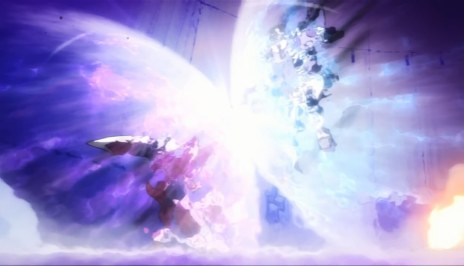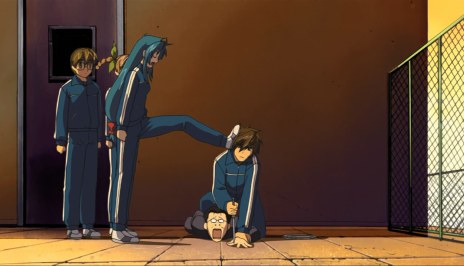Japanese Title: Rurouni Kenshin: Meiji Kenkaku Romantan – Tsuiokuhen
Related: Rurouni Kenshin (main series)
Similar: Basilisk
Watched in: Japanese & English
Genre: Samurai Action Drama Romance
Length: 4 episodes
Positives:
- The right type of tragic backstory.
- Surprising turns.
- Improved technicals compared to series.
Negatives:
- Missing a poetic detail from the manga.
- Tomoe doesn’t have enough of her own story.
I made my disappointment for Rurouni Kenshin clear in my review, finding the ‘neutered for children’ approach to be a ruination of the good manga. The series also removed the best part of Kenshin’s tale, his backstory. Samurai X: Trust and Betrayal is that backstory told over four episodes.
In the lead up to the Japanese revolution, a swordsmaster rescues a slave child from bandits. That child is Kenshin, who, after training under the swordsmaster, would play a pivotal role in the Meiji restoration of Japan. Trust and Betrayal details Kenshin’s bloody legacy and the price it exacts from his soul. One night, he meets Tomoe, a mysterious woman who sees beyond his assassin’s visage. However, his actions have already set in motion a fate that cannot be avoided without a price.
Rurouni Kenshin failed in large part for forgetting who Kenshin was, what atrocities he committed, in the series’ efforts to protect the children. Trust and Betrayal remedies that error by delving deep into Kenshin’s character. It doesn’t hide why he kills as many people as he does; it doesn’t pretend that his actions are pleasant; it doesn’t pretend that he can merely walk away unscathed from it all. An honesty of character is never a bad thing.
Trust and Betrayal does falter in two parts. First, Tomoe doesn’t have enough time for her own story. Not knowing her importance, one would assume that she is a minor character based on her screen time. Where Kenshin is dissected to his core, Tomoe is left unexplored. I understand she is supposed to be mysterious, but even after the conclusion, too little comes to light. Second flaw: they removed a minor detail from the finale that who have compounded the finale’s impact.
Rurouni Kenshin the manga was a seemingly light-hearted samurai story that hid darkness within. The anime was all that darkness removed; Trust and betrayal is the darkest point realised. I wish for a full Rurouni Kenshin adaptation in this style.
Art – High
The mature style suits the narrative better than the childish version from the series ever could. The art reminds me of classical Japanese still-life paints, like the one of the cranes in Kenshin’s house. Good cinematography and animation. Could do without the epilepsy flashing for action, which was all the rage in that era.
Sound – High
Though the cast is the same in Japanese (where common in characters), the acting is much better – not having Kenshin sound like he’s gargling bubble bath helps. The English, too, is better, void of the irritating mannerisms. Music has more impact.
Story – High
The legend of an assassin who would kill hundreds and the consequences of his actions. Kenshin the Manslayer’s origin story. A tragic story soaked in blood. Great, but could have gone deeper.
Overall Quality – High
Recommendation: Even if you have no desire to watch the main series, Samurai X: Trust and Betrayal is worth your time. If only Rurouni Kenshin had this level of quality.
(Request reviews here. Find out more about the rating system here.)
Awards: (hover mouse over each award to see descriptions; click award for more recipients)
Positive:
Negative: None









